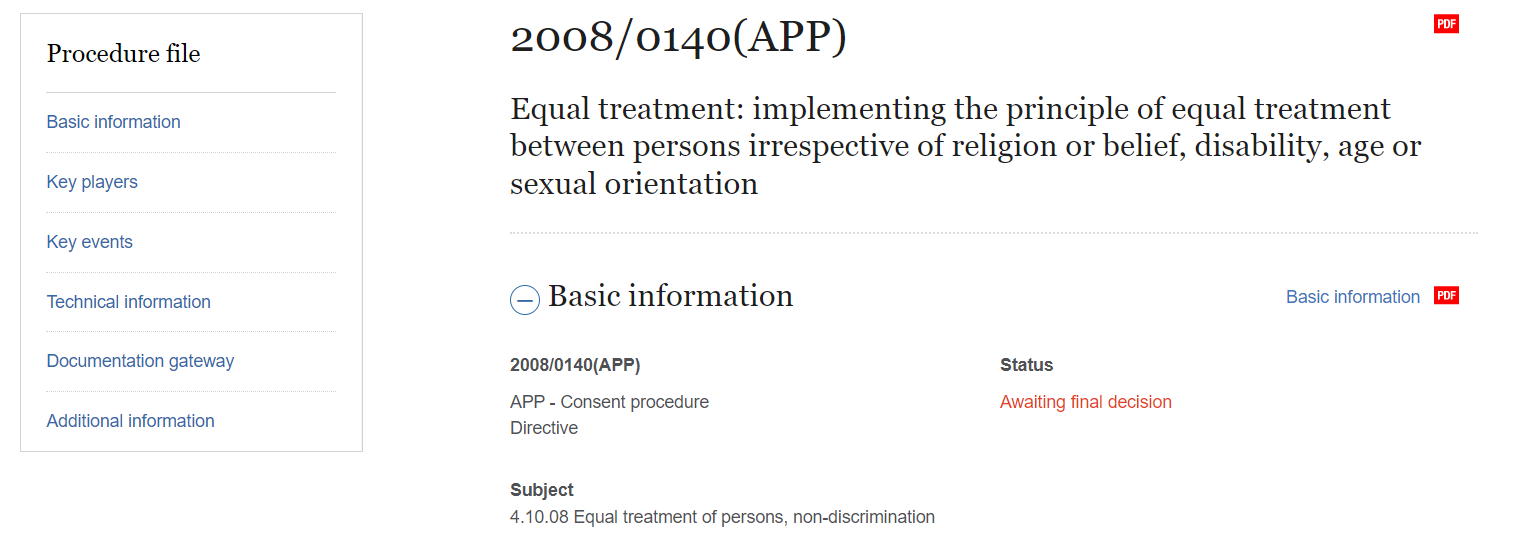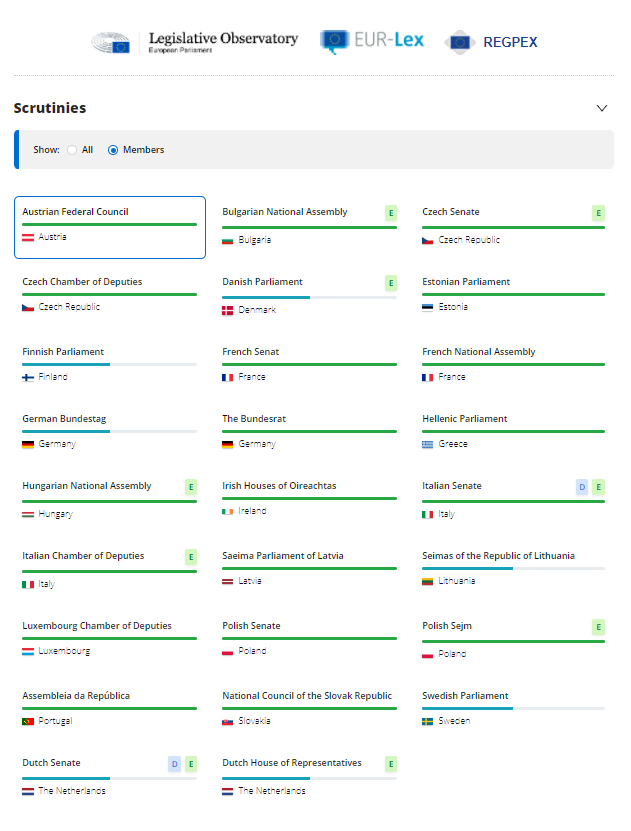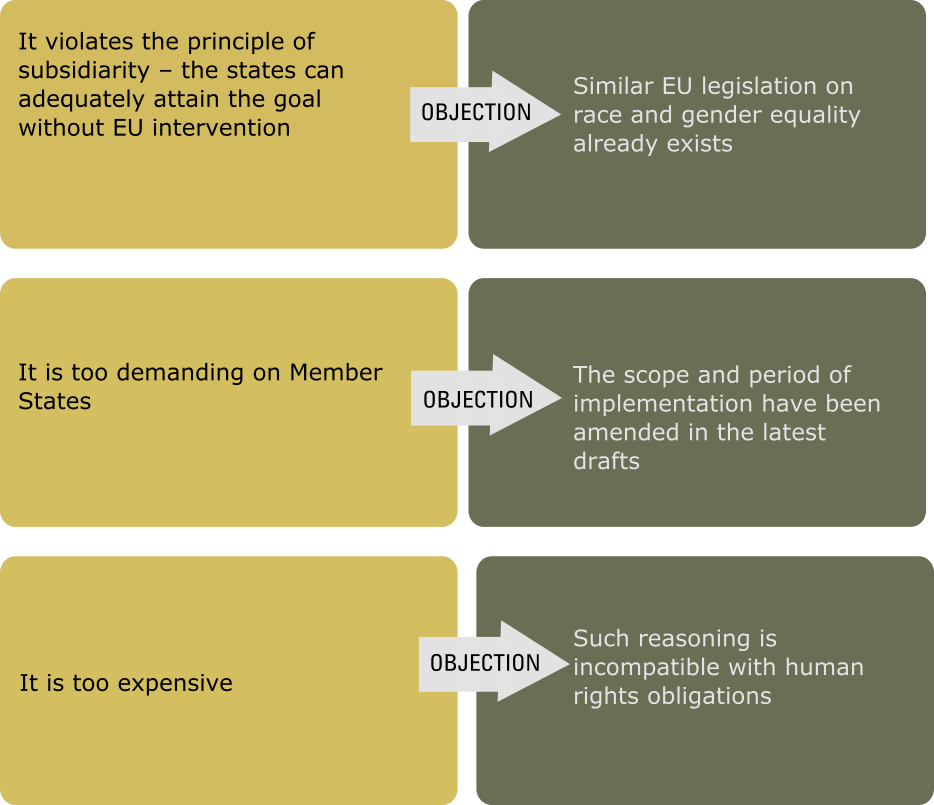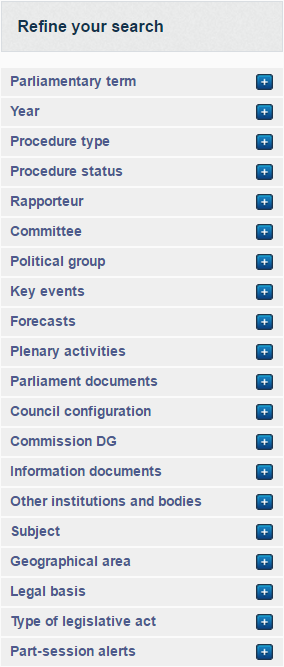European Parliament tools, sources and resources
| Sito: | Moodle OBC - Transeuropa |
| Corso: | The Parliament of Rights |
| Libro: | European Parliament tools, sources and resources |
| Stampato da: | Utente ospite |
| Data: | domenica, 7 dicembre 2025, 14:03 |
Descrizione
The European Parliament, on the basis of the principle of transparency, provides citizens with access to a wide range of materials, documents, infographics, legal resources, studies, videos, and more to document and disseminate its work
Sommario
- 1. Introduction
- 2. Following the course of a legislative process
- 3. How to search on the Legislative Observatory
- 4. The audiovisual resources of the European Parliament
- 5. The decision-making process
- 6. Hearings
- 7. European Parliament Analysis and Research Service
- 8. Other sources for consultation
- 9. Other websites useful for research
1. Introduction
In line with the principle of transparency, the European Parliament makes a wide range of materials available to citizens: legal resources, documents, studies, but also multimedia material, infographics, video recordings, and more to document and promote its activities, in particular the legislative one.
In 2021, on the occasion of Europe Day which is celebrated on 9 May, the EP promoted a series of online activities aimed at making the EU and its institutions better known. Find out more on the dedicated page: Europe Day 2021.
This module provides a guide to the tools and sources made available by the European Parliament to deepen the knowledge of the decision-making mechanisms of the European Union.
The place to start is the EP website where you can find information such as political news and the concrete functioning of the institution.
1.1. Powers of the European Parliament
Summarising what has been briefly illustrated above, we recall that Parliament has powers: legislative, supervisory, and budgetary.
There is a lot of information made available by the EP in each of these areas and can be used for studies but also for teaching purposes.
This module shows how to investigate: the process of defining a European regulation; the effort to verify its implementation by the community institutions; the resources made available etc.
Legislative competenceThe legislative function of the EU Parliament follows 4 main procedures: the Ordinary Legislative Procedure, initially called the codecision procedure (COD); the Special Legislative Approval Procedure (APP); the Special Legislative Consultation Procedure (CNS); the Initiative Procedure (INI). In the previous modules we have extensively illustrated the Ordinary Legislative Procedure (COD) or the main procedure of the EU decision-making system that sees the EP co-legislator with the Council. We know that in some cases provided for by the treaties, consultation and approval procedures apply: the APP is necessary, for example, for the approval of new legislative acts relating to the fight against discrimination such as the "horizontal directive". We have seen that the legislative initiative rests solely with the European Commission. However, with the Initiative Procedure (INI) the Parliament can ask the Commission to present a legislative proposal on an issue it considers relevant by approving an own-initiative report by a majority.
|
The supervisory competenceThe European Parliament has various supervisory and monitoring powers on the other institutions, on the expenditure of the Community budget, and on the correct implementation of the regulations adopted. In particular, the EP ensures the democratic oversight of the Commission, which presents regular reports to the Parliament, including the annual report on EU activities and the budget. Furthermore, the appointment of the President of the Commission by national leaders in the European Council must take into account the outcome of the European elections. The candidate for president is elected by the European Parliament while the commissioners-designate are required to candidate themselves with a hearing in the Parliament. |
The budgetary procedureThe European Parliament shares with the Council the power to decide on the entire annual budget of the European Union. The exercise of budgetary power consists in setting the overall amount and distribution of the annual EU expenditure and the revenue necessary to cover it, as well as in controlling the implementation of the budget. The budgetary procedure as such involves the preparation and adoption of the budget. Finally, Parliament must approve the multiannual financial framework. |
2. Following the course of a legislative process
The animated arrow conceived by the European Parliamentary Research Service Blog summarises the various stages of the legislative process, starting from the Commission proposal up to adoption.
By clicking on the arrow we invite you to access the EP Legislative Train page which allows you to monitor the progress of the various dossiers in the 5 years of Parliament's term and, in this specific case, the progress of the Directive on anti-discrimination.
THE LEGISLATIVE OBSERVATORY
It is a tool for monitoring the EU institutional decision-making process. It focuses in particular on the role of the European Parliament. Over time, the website has expanded its scope, including further information related to the activity of the Parliament, and covering various areas, from the legislative function to that linked to the budget, the right of initiative, the power to approve appointments and various international agreements. The site publishes the "procedure files" or "fiches de procédure" in English and French, constantly updated until the process is completed. The search tool allows to identify the individual procedures quickly, by inserting filters and by combining different search options. The My Observatory function also allows you to save your searches and receive notifications in case of changes to the saved files.
It is the EU portal that allows access to a wide range of documents in the 24 official EU languages:
Official Journal of the EU
EU law
Treaties
Legal acts
Consolidated texts
International agreements
Preparatory documents (legislative proposals, reports, white papers, green papers etc...)
EFTA documents
Regulatory procedures
Summaries of EU legislation, which collocate legal acts in the relevant political context and illustrate their contents in simple language
EU institutions
EuroVoc
EU jurisprudence
Law
Digital collections
Collection of jurisprudence
National legislation and jurisprudence
National transposition
National jurisprudence
JURE Jurisprudence
It also allows us to follow current events, the budget, and statistics relating to EU law. The online learning module made available by the EU allows you to learn how to consult EUR-Lex in the best way.
It is the pan-European website that allows the exchange of information between national parliaments and the European Parliament on issues related to the European Union. The iple section consists of a database of documents with bills, consultative, and information documents from the European Commission; parliamentary documents and information regarding the EU. Each national parliament uploads parliamentary documents individually.
3. How to search on the Legislative Observatory
On the Legislative Observatory website you can set various parameters from the Search section by entering a keyword or refining the search with other filters.
For your search, you can evaluate which parameter is most useful to you: the political group of reference, the type of act, the parliamentary committee in charge, etc.
3.1. The case of the horizontal directive against discrimination
In the case of the horizontal Directive against discrimination, by inserting "Equal Treatment", one easily arrives at Directive 2008/0140 (APP).
At the top left of the form or procedure file, the Legislative Observatory presents us with the number and procedure in question. For the Equality Treatment Directive of 2008 it is an APP or a Special Legislative Procedure: the Council must deliberate unanimously, after obtaining the approval of the European Parliament. As we saw earlier, the Lisbon Treaty, in fact, integrated the fight against discrimination into all policies and actions of the Union (Article 10 of the TFEU), making the special procedure necessary.
The fiche shows that the Directive was proposed in 2008 by the Commission and, after being discussed, was approved in plenary in the European Parliament in 2009. Furthermore, it implies that we await its approval by the Council.
Among the information contained in the fiche, the information on the parliamentary committee that examined the proposal may be useful; in this case the responsible committee is the Committee on Civil Liberties, Justice and Home Affairs - LIBE.It may be useful to investigate who the speakers are, which political group they belong to, how the debate and the vote took place. In the case of an ordinary procedure it is interesting to see what the amendments are and who proposed the amendments, etc.

Using IPEX, on the other hand, we can look at the position of the member states and we learn that the following states have not approved the directive: Denmark; Finland; Germany; Lithuania; Sweden; Holland; United Kingdom. We can therefore learn more about the reasons for the non-approval by each of the 7 countries.

3.2. What are the reasons and effects of the block?
The "key events" reported in the procedure file bring us back to the debate in the Council of 11 December 2014 and mentions in particular the position of Germany.
The case of Germany
Germany is one of the countries blocking the horizontal Directive which could provide more people in Europe with the same rights as German citizens.
In 2006, Germany adopted the General Equal Treatment Act/ Allgemeine Gleichbehandlungsgesetz (AGG). The main objective of this act is the protection of people living in Germany against discrimination on the basis of their race, ethnicity, gender, religion or belief, age, disability, or sexual orientation. The protection provided applies to both labour and civil law. So why is Germany opposing this directive?
In summary, here are the three main reasons given against the Directive and the objections that can be raised:

Italy, on the other hand, approved the directive after the European Affairs Commission deemed it in line with the principle of subsidiarity.
The position of member countries that oppose the approval of the Directive influences people's decisions regarding the exercise of their right to move freely for travel, work, or study. It also makes it more difficult for those who supply goods and services to operate across borders. The difference in protection from discrimination at a national level and at the EU level also means that cases of discrimination cannot be dealt with consistently and that victims of discrimination have unequal means depending on the Member State to remedy them.
Source: Commission Staff Working Document (ENG)
Finally, thanks to EP audiovisual resources, we can watch the aforementioned plenary speech by MEP Sophie in't Veld who in 2014 denounced the underlying political reasons why the directive would not be approved.
4. The audiovisual resources of the European Parliament
The Multimedia Centre is an important resource for keeping up with the activities of the European Parliament. Through this platform it is possible to follow the sessions of the committees and the plenaries of the EP in live streaming. The Multimedia Centre also provides various materials, including summaries of parliamentary activities, educational videos and audio, infographics, and archival material in various formats. Most of the materials are available in all official EU languages; the live broadcast of parliamentary sessions almost always provide for instant translation into all the official languages of the Union, while the educational videos always include subtitles at least in English.
Parliament has also created a learning video library to inform citizens about European institutions.
On Youtube, in addition to the official channel of the EP and the European Parliament Research Centre, you can find various channels, for example those of the various European political groups, where you can find useful videos to keep up to date on EP news.
Below is an example of video material from the European Parliamentary Research Service useful for understanding the implementation status of the Employment Equality Directive (2000/78/EC) in 2016.
* This video was made before the UK left the EU, so it mentions about 28 member states.
The audiovisual website of the European Commission and the European Council also provides a wide range of information materials on the EU, on the policies and on the work of the main institutions.
5. The decision-making process
PARLIAMENTARY QUESTIONS
Parliamentary questions are questions that MEPs address to other institutions and bodies of the European Union and as such constitute a direct instrument of parliamentary control over them.
According to the EP rules, parliamentary questions are divided into three categories:
Oral: can be submitted by a parliamentary committee, a political group, or at least 5% of the members of the Parliament to the Council, the Commission or the Vice-President of the Commission/ High Representative of the Union for Foreign Affairs and Security Policy. Oral questions are included in the agenda of the EP sessions (art. 136).
Question time to the Commission: can take place in each session on one or more horizontal themes. The question time has a maximum duration of 90 minutes, during which the questions of the MEPs alternate with the answers of the commissioners (art. 137);
Written: can be addressed by a MEP, a political group, or a parliamentary committee to the President of the European Council, the Council, the Commission, or the Vice-President of the Commission/ High Representative of the Union for Foreign Affairs and Security Policy (art. 138).
5.1. Question time to the Commission
Example of the parliamentary question addressed to Vladimír Špidla, former Commissioner for Employment, Social Affairs and Integration, by Claude Moraes, former British MEP belonging to the Group of the Progressive Alliance of Socialists and Democrats, on the horizontal directive against discrimination that took place during the session of July 2008. The then Commissioner, replying to the question, referred to issues that emerged in the debate on the approval of the directive such as the alleged violation of the principle of subsidiarity or the financial burdens deriving from its introduction. Similarly, the problem of uneven protection against discrimination is raised in the exchange. This also illustrates the control role of the European Parliament on the transposition of directives by the member states. Discussions | |
| Wednesday, 9 July 2008 - Strasbourg | OJ Edition |
| ||||||
Subject: Anti-discrimination horizontal directive The European Commission announced that this spring would see the launch of the new horizontal directive prohibiting discrimination. What is the latest development regarding the scope of the directive? Will there be a far-reaching anti-discrimination directive including ALL of the remaining grounds of Article 13 of the Amsterdam Treaty – namely age, disability, religion or belief, and sexual orientation, as supported by a majority in the European Parliament? If not, could the European Commission give its reasons, and outline its detailed plan of action for the coming months? |
The proposal for a directive therefore takes into account the specifics of each ground of discrimination so that the directive is as effective as possible. Specifically, it makes it possible, depending on the context, to take into account the age, and to consider the issue of age and disability in the insurance and banking sector, if this is adequate and reasonable, and I stress the words adequate and reasonable. This may never mean wilful exclusion of older or disabled persons from these sectors. In cases of disability, the principle of equal treatment is a positive commitment providing for general accessibility for disabled persons and carrying out appropriate adjustments in individual cases. Such measures do not represent a disproportionate burden. The proposal for a directive clearly states that account shall be taken of the size, nature and resources of the organisation, the estimated cost, the life cycle of goods and services, and the possible benefits of access for persons with disabilities. The proposal is an important step towards closing a huge loophole in non-discriminatory legislation. Of course we realise that protection from discrimination on grounds of gender outside the workplace is not yet as strong as protection from discrimination on grounds of race. This is because Directive 2004/113/EC does not cover the area of education, as can be seen from the explanatory statement of this proposal. We think that it would be too premature to propose changes to said Directive, since the period for its implementation ended only recently. However, when we are preparing the implementation report in 2010, we can propose changes to the Directive if necessary. |
Let me just ask you and the Commission to maintain your vigilance so that derogations and exemptions to the principle of equal treatment are not sought on just any grounds: they must be sought on necessary grounds and on genuine principles of subsidiarity, because we have seen transpositions of the Employment Directive and Race Equality Directive which were not complete and we must ensure that this good package becomes law in the Member States. |
|
|
|
5.2. The written parliamentary question
The example of the question by Hugues Bayet, former Belgian MEP from the Group of the Progressive Alliance of Socialists and Democrats in the European Parliament, addressed to the EU Council, on 27 January 2016:
“The proposal for a directive on implementing the principle of equal treatment between persons irrespective of religion or belief, disability, age or sexual orientation has been blocked in the Council for too many years.
However, news reports show all too often that discrimination is still very much in evidence and is even on the rise in the European Union.
Could the Council say what initiatives it intends to take in the next six months so that progress can be made with this proposal?”.
The Council replied to the question on 11 April 2016 stating that the proposal was under discussion but that the outcome or duration of the discussions could not be predicted.
The reply also refers to the Council's latest Progress Report on the proposal of 23 November 2015.
The elements affirming the need for "further discussion" include:
- the general scope of the proposal, as some delegations oppose the inclusion of social protection and education;
- remaining aspects of the division of competences and subsidiarity;
- the certainty of the commitments that would result from the approval of the directive.
6. Hearings
A committee may organise a hearing of experts, where this is deemed essential for its work on a particular topic. Hearings can also be held jointly by two or more committees. Most committees hold hearings on a regular basis as they allow for experts to be consulted and key issues to be discussed.
Hearings page containing all available information about parliamentary committee hearings, including programmes, speakers' contributions, and important preparatory documents.
For example the multimedia material related to the hearing organised by the LIBE Commission on the directive against discrimination in 2012:
20-03-2012 - Unblocking the Anti-Discrimination Directive
Speeches by: Pierre Baussand, Social Platform; Ioannis Dimitrakopoulos, European Agency for Fundamental Rights; Svetoslav Hristov Malinov, Group of the European People's Party; Isabelle Chopin, European Network of independent experts in the field of non-discrimination.
7. European Parliament Analysis and Research Service
The European Parliamentary Research Service - EPRS is the internal research centre of the European Parliament. It works to provide independent analysis on specific issues that can also be consulted by the public. The service includes analyses and research done at the request of the members of the European Parliament, as an answer to specific questions posed to them on EU issues, policies, legislation. The page also contains summaries, fact sheets, and reports as well as personal reports presented to MEPs on a specific EU issue.
The EPRS also manages:
7.1. The EPRS Blog and the EP Think Tank
The blog of the European Parliament's Research Service provides direct contact with the team of specialists who assist MEPs in researching and drafting legislation.
The Study Centre of the European Parliament or EP Think Tank makes all the publications produced available.

For example, in 2014 the EP commissioned a study from EP Think Tank to facilitate reaching an agreement with the Member States that oppose the approval of the horizontal Directive “Equal Treatment between Persons”.
8. Other sources for consultation
According to Regulation (EC) No. 1049/2001, the European Parliament, the Council, and the Commission make available online a register of documents to which - in accordance with Article 15 of the Treaty on the Functioning of the European Union - any citizen of the Union and any person residing in a Member State has the right to access.
European Parliament's public register website.
On the page National Parliament opinions and Commission replies you can find the views of the national parliaments and the replies of the European Commission.
Public register of Council documents
The EU Official Journal is a database where the official documents of all EU institutions and bodies can be found in all official languages.
N-Lex: A common gateway to national law allows you to access the national legislative databases of the individual EU member states.
9. Other websites useful for research
ESPAS is a unique interinstitutional project aimed at intensifying EU efforts in the crucial area of foresight planning.
ORBIS - forecasting studies platform. It presents itself as the largest library of foresight studies in the world.
URBIS - implementation studies platform. It collects all the material coming from national parliaments, regions, cities, and social partners and is connected with the Commission's work programme.
The Fact Sheets on the European Union are a concise but comprehensive source of information that provides an overview of European integration, EU institutions and policies as well as the role played by Parliament in this process. They are updated regularly and can be found on both the Think Tank and Fact Sheets websites.
EU Publications: the bookshop, library, and online archive of the publications of the EU institutions.
VoteWatch Europe is an independent organisation that tracks the vote of European politicians. It is not linked to the European Parliament or to other European institutions, local or national governments, political parties, agencies, organisations linked to the business world or other sectors. It provides quick access to data by offering state-of-the-art analysis of the votes and other activities of the European Parliament and the EU Council.
data.europa.eu is a portal with a catalogue that allows access to the data of the institutions and other EU bodies on various topics: agriculture, transport, population and society, etc.
On discrimination in the EU: Special Eurobarometer 493: Discrimination in the EU (including LGBTI)
Eurobarometer is a service offered by the European Commission which measures and analyses trends in public opinion in all Member States and candidate countries.


